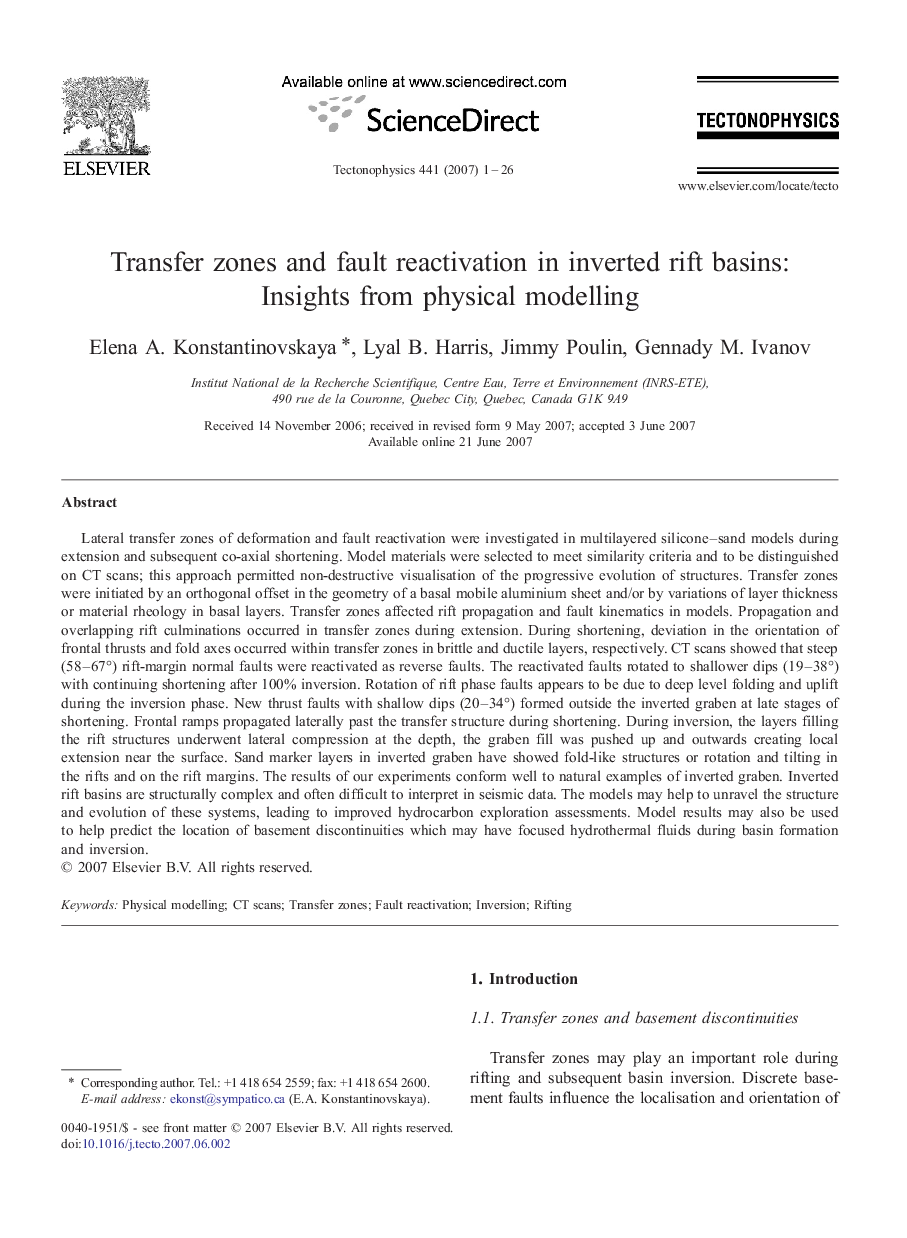| کد مقاله | کد نشریه | سال انتشار | مقاله انگلیسی | نسخه تمام متن |
|---|---|---|---|---|
| 4694603 | 1636928 | 2007 | 26 صفحه PDF | دانلود رایگان |

Lateral transfer zones of deformation and fault reactivation were investigated in multilayered silicone–sand models during extension and subsequent co-axial shortening. Model materials were selected to meet similarity criteria and to be distinguished on CT scans; this approach permitted non-destructive visualisation of the progressive evolution of structures. Transfer zones were initiated by an orthogonal offset in the geometry of a basal mobile aluminium sheet and/or by variations of layer thickness or material rheology in basal layers. Transfer zones affected rift propagation and fault kinematics in models. Propagation and overlapping rift culminations occurred in transfer zones during extension. During shortening, deviation in the orientation of frontal thrusts and fold axes occurred within transfer zones in brittle and ductile layers, respectively. CT scans showed that steep (58–67°) rift-margin normal faults were reactivated as reverse faults. The reactivated faults rotated to shallower dips (19–38°) with continuing shortening after 100% inversion. Rotation of rift phase faults appears to be due to deep level folding and uplift during the inversion phase. New thrust faults with shallow dips (20–34°) formed outside the inverted graben at late stages of shortening. Frontal ramps propagated laterally past the transfer structure during shortening. During inversion, the layers filling the rift structures underwent lateral compression at the depth, the graben fill was pushed up and outwards creating local extension near the surface. Sand marker layers in inverted graben have showed fold-like structures or rotation and tilting in the rifts and on the rift margins. The results of our experiments conform well to natural examples of inverted graben. Inverted rift basins are structurally complex and often difficult to interpret in seismic data. The models may help to unravel the structure and evolution of these systems, leading to improved hydrocarbon exploration assessments. Model results may also be used to help predict the location of basement discontinuities which may have focused hydrothermal fluids during basin formation and inversion.
Journal: Tectonophysics - Volume 441, Issues 1–4, 15 August 2007, Pages 1–26